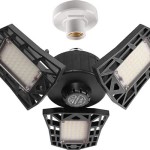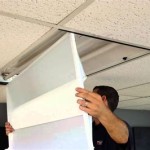Essential Aspects of Suspended Ceiling Light Diffuser Panels
Suspended ceiling light diffuser panels are an indispensable part of any well-designed commercial or institutional space. They play a crucial role in delivering high-quality illumination while minimizing glare and shadows, ensuring occupants' comfort and well-being. Understanding their essential aspects is vital for architects, designers, and facility managers to effectively integrate these panels into their projects.
This comprehensive article explores the key aspects of suspended ceiling light diffuser panels, providing valuable insights to enable informed decision-making. By understanding the materials, construction, light distribution, and installation methods, you can optimize your lighting design to meet specific space requirements.
Materials and Construction
Suspended ceiling light diffuser panels are typically made from lightweight materials such as acrylic, polycarbonate, or PET. These materials offer excellent light transmission, ensuring even illumination, while their durability ensures longevity in demanding environments. The construction of the panels involves precision engineering to control light distribution and minimize glare.
Light Distribution
The light distribution of a diffuser panel is a critical factor in determining the quality of illumination. Different diffuser designs provide various light distribution patterns, allowing designers to tailor lighting to specific space requirements. Some panels offer uniform diffusion, creating a soft, evenly illuminated space, while others produce directional light for task-specific areas.
Installation Methods
Suspended ceiling light diffuser panels offer flexible installation methods to accommodate different ceiling systems. They can be installed in T-bar grids, suspended from cables or chains, or integrated into custom framing systems. The ease of installation ensures minimal disruption during construction or renovation projects, facilitating seamless integration into existing spaces.
Additional Considerations
In addition to the core aspects discussed, other factors may influence the selection and installation of suspended ceiling light diffuser panels. These include fire resistance ratings, acoustic performance, and ease of maintenance. By considering these additional factors, you can ensure that the panels meet the specific safety, functionality, and aesthetic requirements of your project.
Conclusion
Suspended ceiling light diffuser panels play a vital role in creating optimal lighting solutions for various commercial and institutional spaces. Understanding their essential aspects, including materials, construction, light distribution, and installation methods, empowers professionals to make informed decisions. By carefully considering these factors, designers can optimize lighting performance, enhance occupants' comfort, and create visually appealing and functional spaces.

Cut Glare With 600mm Prismatic Ceiling Light Diffusers Order

Prismatic Light Diffuser Clear Frosted Transpa Plastic

Plastic Light Prismatic Diffuser Tile For Suspended Ceilings 600x600

What S The Difference Between Egg Crate And Prismatic Diffuser Jcs

T R Interior Systems Light Diffusers Air Vents

Suspended Ceiling Skylight Ceilings Qld

Prismatic Light Diffuser Clear Frosted Transpa Plastic

Optix 23 75 In X 47 Clear Plastic Ceiling Light Panel 1420083a The Home Depot

High Quality Light Covers Sky Ceiling Panels Led And Fluorescents

Suspended Ceiling Lights Types And Styles Available
Related Posts









